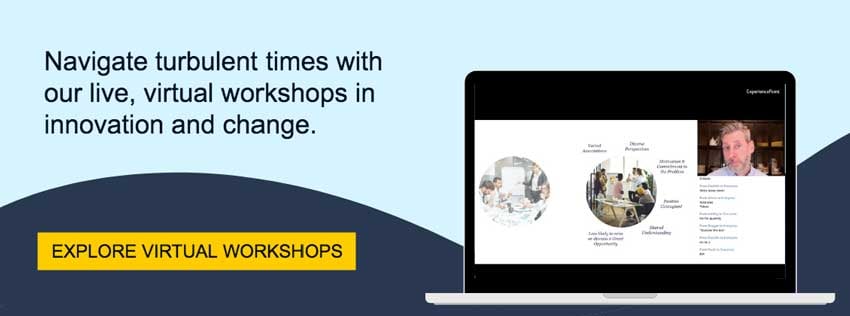An aspiring pilot lands a Boeing 737 in low visibility, from the comfort of an on-land base. A medical team performs a complex operation on a dummy patient, unencumbered by the high-risk context of life or death.
The practice of simulation has long-since been considered a critical tool for honing and embedding essential skills across major industries — creating a safe realm to evoke or replicate substantial aspects of the real world and accelerating problem-solving in an immersive and thought-provoking way.
Yet many would ask how simulation-based learning would be of any value in present circumstances since we are, in a sense, “already there” — hurtling through the middle of a crisis so novel that no one could have adequately prepared for it.
The answer is that while simulation-based learning might be interpreted as an unnecessary use of energy and resources in the midst of a crisis, it is precisely during such times that simulations can provide the most benefit.
A recent paper published by BioMed Central calls the COVID-19 outbreak a “textbook case for the use of simulation and an opportunity for simulation to play to its strengths.” Why? From a preventative standpoint, pre-established simulation processes such as PPE drills and the use of patient actors to test the readiness of first-line clinical sites (both deployed at Stanford University Hospital in the wake of 2014’s Ebola outbreak) have proven critical to readying the response to the current crisis despite its unique complexities and scale.
In a mid-crisis context, simulations are being developed and deployed as we speak to roll out rapidly-emerging best practices and processes across medical organizations. The Canadian Association of Schools of Nursing, for example, has released online simulation modules for staff needing to quickly reuptake learnings around PPE, whereas organizations such as Safer.net have created websites dedicated solely to emergency resource simulations that will help healthcare worker familiarize themselves with the evolving challenges of this time.
Understanding simulation as an extremely powerful tool for rapid information retention (a recent study conducted by researchers in education found that 70% of information retained by learners is gained through experience), digital design specialists at the Annenberg School for Communication created a 360-degree virtual reality simulation demonstrating COVID-19 treatment practices in order to prepare medical staff in remote locations to respond to a possible spike in cases.
As these and so many other examples show, organizational endeavors — in the healthcare community or otherwise — cannot be successful if people aren’t given the chance to make mistakes together. Simulations allow teams to fail in low-risk situations, to explore counterproductive behaviours and to provide scaffolding around new concepts before embarking into the high-risk territory of real life.
Most importantly, simulation-based training and learning is proven to affect behavioral outcomes, both rapidly and sustainably — making it a crucial ally in the midst of crisis, when minds are already occupied with a diverse range of exterior concerns. In the same way that we don’t learn to ride a bike by reading a book, creative habits and leadership reflexes are honed and permanently embedded by doing, not just by reading or listening.
The Covid-19 pandemic has presented immense challenges but also unearthed significant opportunities, creating a time to grasp new practices and processes that will stronghold modern businesses and prime their people for future-facing possibilities.
Simulation as a practice holds unquestionable power, and has been made more powerful still by the advent of new technologies. Enhanced exponentially by the rich flavours and textures afforded by digital capability, organizations, leaders and learners of now are both growing and thriving with the tool of simulation on their side.
